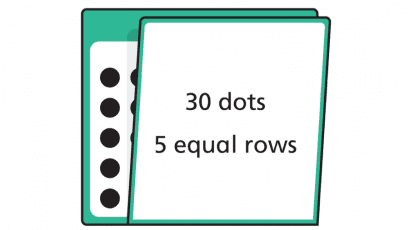Insights
Think Multiplication to Make Division Facts Easy
Teaching your students to learn division facts with ease? The think-multiplication strategy is the key!
Division facts. They just may be the most challenging of the number facts to learn. But they don’t have to be challenging at all. Using the think-multiplication strategy is the key! Students who know the multiplication and division facts and who understand the connection between multiplication are primed to learn the division facts.
Check out these posts on the use-tens, doubling, and build up/build down multiplication strategies.
Division Facts – Getting Started
To ensure that students are primed to go, use grouping and sharing diagrams like the ones below. These diagrams will remind students of their multiplication facts and strengthen the connection between multiplication and division.
Place four counters in each of the three groups and say, Three friends have four jelly beans each. Move the counters into one large group and ask, How many jelly beans are there in total? Write 3 x 4 = 12 on the board and ask, What number tells us how many jelly beans there are in total? (12) What do the other numbers tell us? (The number of friends and the number of jelly beans each friend has.)
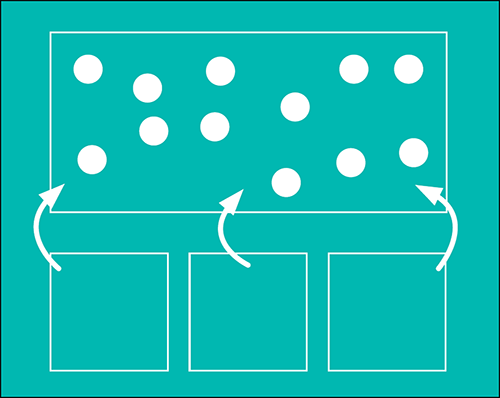
Turn the diagram upside down and ask, How many jelly beans are there in total? (12) Three friends share the jelly beans evenly. Share the counters into three groups and ask, How many jelly beans are in each share? Write 12 ÷ 3 = 4 on the board. What number tells us how many jelly beans there are in total? (12) What do the other numbers tell us? (The number of friends and the number of jelly beans for each friend.) What is the same about both stories? What is different?
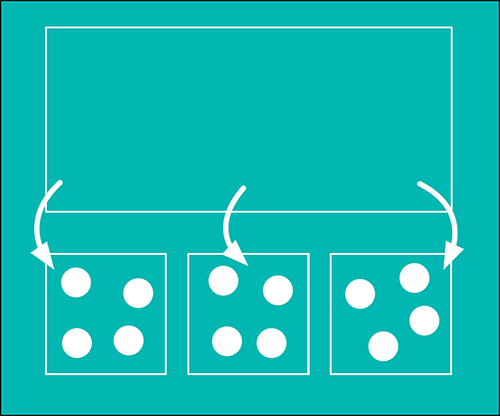
How are Multiplication and Division Related?
Multiplication and division both involve equal-sized groups and a total amount. With multiplication, we know the number of groups and the size of each group. The total is unknown. However, with division we know the total amount, but need to determine either the number of groups or the size of each group.
Because of this relationship, multiplication is considered the inverse operation of division. Using multiplication is the most effective thinking strategy for helping students to learn the basic division facts. See this ORIGO One video for more about the think-multiplication strategy.
Teaching the think-multiplication division strategy from ORIGO Education on Vimeo.
You can make a set of flip cards like the one shown in the video by following this pattern. I’ve made them with manila folders and dot stickers! To save time, you can also get The Box and Book of Facts which contains all of the cards you need for the multiplication and division strategies described in this blog series.
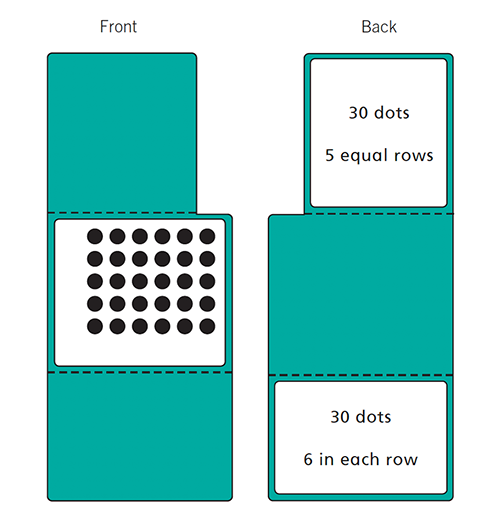
You can use these cards to show the different types of division. Ask questions such as, What do we know when we look at this card? How many are in each row? How many groups are there? Is there a multiplication fact that can help?
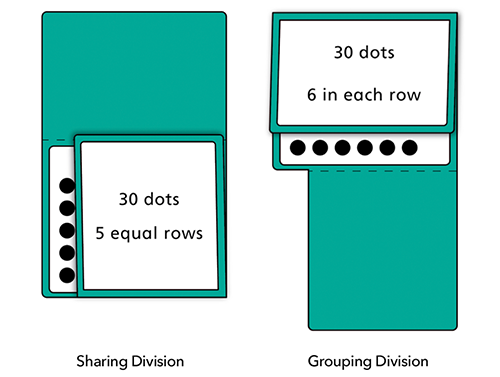
Division Fact Families: Free Printable and Classroom Activity
Multiplication and division facts that involve the same number of equal-sized groups and total amount form fact families. Students need to understand the connections between the number facts within a family. (Click here to download a blank fact family puzzle to use in your classroom.)
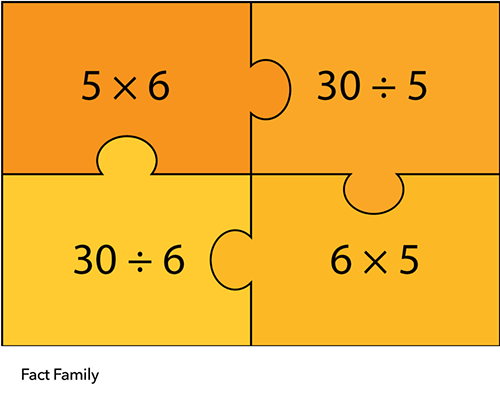
Fun Fact: What is the Division Symbol Called?
The division symbol (÷) is called an obelus. It was widely used as the symbol for subtraction until Johann Rahn, a Swiss mathematician, used it for division in 1659.
Use this resource to solidify the fact families with your students. Have students color in a rectangular array on the grid. Then have them write the related multiplication and division facts to match the array. (Click here download this division facts worksheet printable to use in your classroom.)
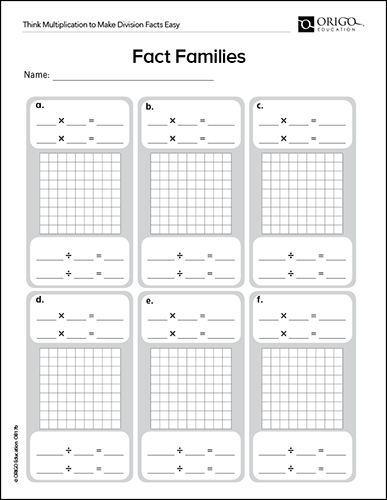
This is the last post in the number fact series. Thanks for joining us! Please go back and read the other posts if you missed out. Here is the first post in the series.
Click HERE for the downloadable resources for this article!
About ORIGO Education
ORIGO Education is dedicated to making learning meaningful, enjoyable and accessible for all students with Pre-K and Elementary print and digital instructional materials, as well as professional learning for mathematics.
![]()


